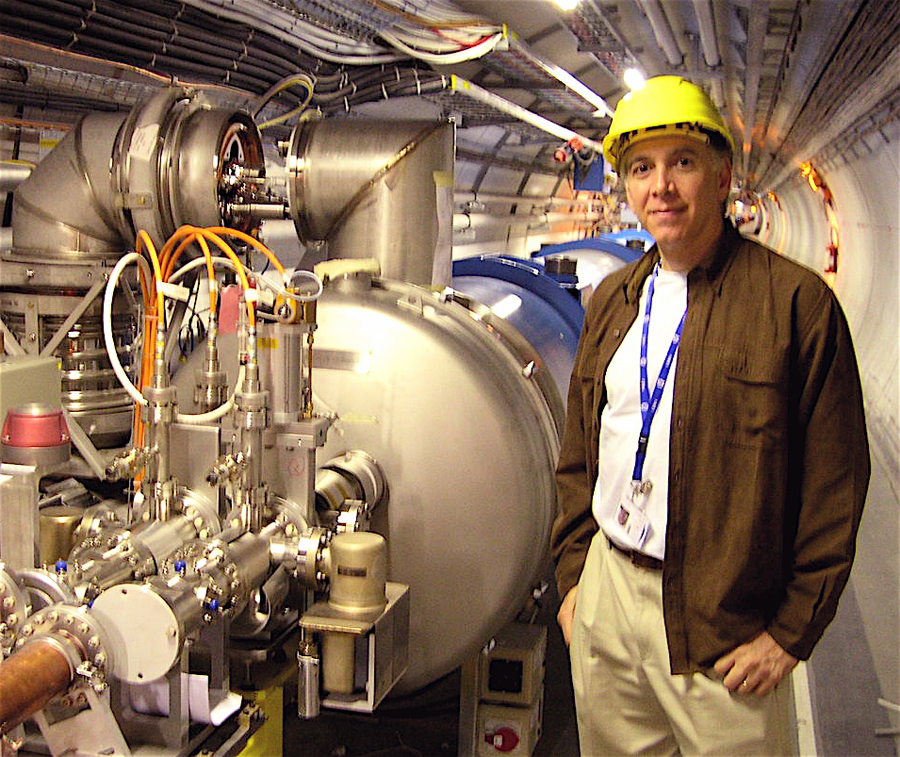
Joseph Incandela, professor of physics at UC Santa Barbara, has been elected by his colleagues as the next spokesperson for the Compact Muon Solenoid (CMS) experiment at the Large Hadron Collider (LHC) in Europe.
Incandela is the first U.S. scientist to be elected spokesperson for an experiment at the LHC, the world's largest particle accelerator. The LHC was built by the European Organization for Nuclear Research (CERN). "Being the first U.S. scientist to head one of the LHC experiments is a big milestone," said Incandela, who has been a deputy spokesperson for CMS since 2010. "I could not have been in the position I am now without the support I have from UCSB."
The CMS experiment is a truly international effort, with 2,200 scientific authors and more than 3,000 total members, including engineers and other scientific professionals. There are about 180 institutes from 39 countries represented in CMS, which is located in France, just across the border from Switzerland.
"We are enormously proud and excited to have faculty involved at high levels in one of the most important physics experiments happening on the planet," said Omer Blaes, chair of UCSB's Department of Physics. "This is an experiment on a truly grand scale, involving thousands of scientists from all over the world, and exploring some of the most important questions in fundamental physics today. Professor Incandela's election to lead this experiment is a testament both to his tremendous stature as a scientist and to his outstanding leadership abilities. We are incredibly fortunate to have him as a colleague in the UCSB Physics Department."
Incandela was elected on the first ballot to a two-year term, which will begin Jan. 1, 2012. In the High Energy Physics community, the title of spokesperson is a term that represents the head of the scientific collaboration.
"Being the first U.S. spokesperson at the LHC is very important for the U.S. High Energy Physics community, and winning the election by a large margin highlights the fact that I was supported by institutions all over the world, not just the U.S.," Incandela said. "This is really important to me. The collaboration trusts me to be fair and to ensure that all of our results and potential discoveries are shared by all. They also have confidence in me to apply my experience to help achieve our goals."
CMS, one of the LHC's four major experiments, is a complex array of instruments used to detect subatomic particles. It weighs 14,000 metric tons and is four stories tall. A contingent of more than 40 UCSB faculty members, graduate students, postdoctoral researchers, and others worked for eight years to help construct the apparatus. In addition to Incandela, UCSB is represented at the LHC by professors Claudio Campagnari, David Stuart, Jeffrey Richman, and Steve Giddings.
According to Incandela, the CMS spokesperson is ultimately responsible for how the apparatus and the physics program of the experiment are managed. He said he will
focus on three main priorities during his 2012-13 term:
Continuing operation of the detector in 2012, during which scientists expect to gather enough data to say something definitive about the Higgs particle and have other important observations. The studies will go on through 2013, even though data acquisition may stop at the end of 2012 for the upgrade of the LHC to higher energy.
Upgrading the experimental apparatus in 2013 for a new startup in 2014 at nearly twice the current energy.
Overseeing preparations of all of the computing, software, and physics analyses for the new high-energy data scientists will start collecting in 2014.
"This represents a lot more than we are doing now, so it is going to be a major challenge," Incandela said. "I am very optimistic we will do well because the CMS collaboration is amazingly capable. The expertise and dedication of the CMS collaboration is extraordinary by any measure."
Related Links



